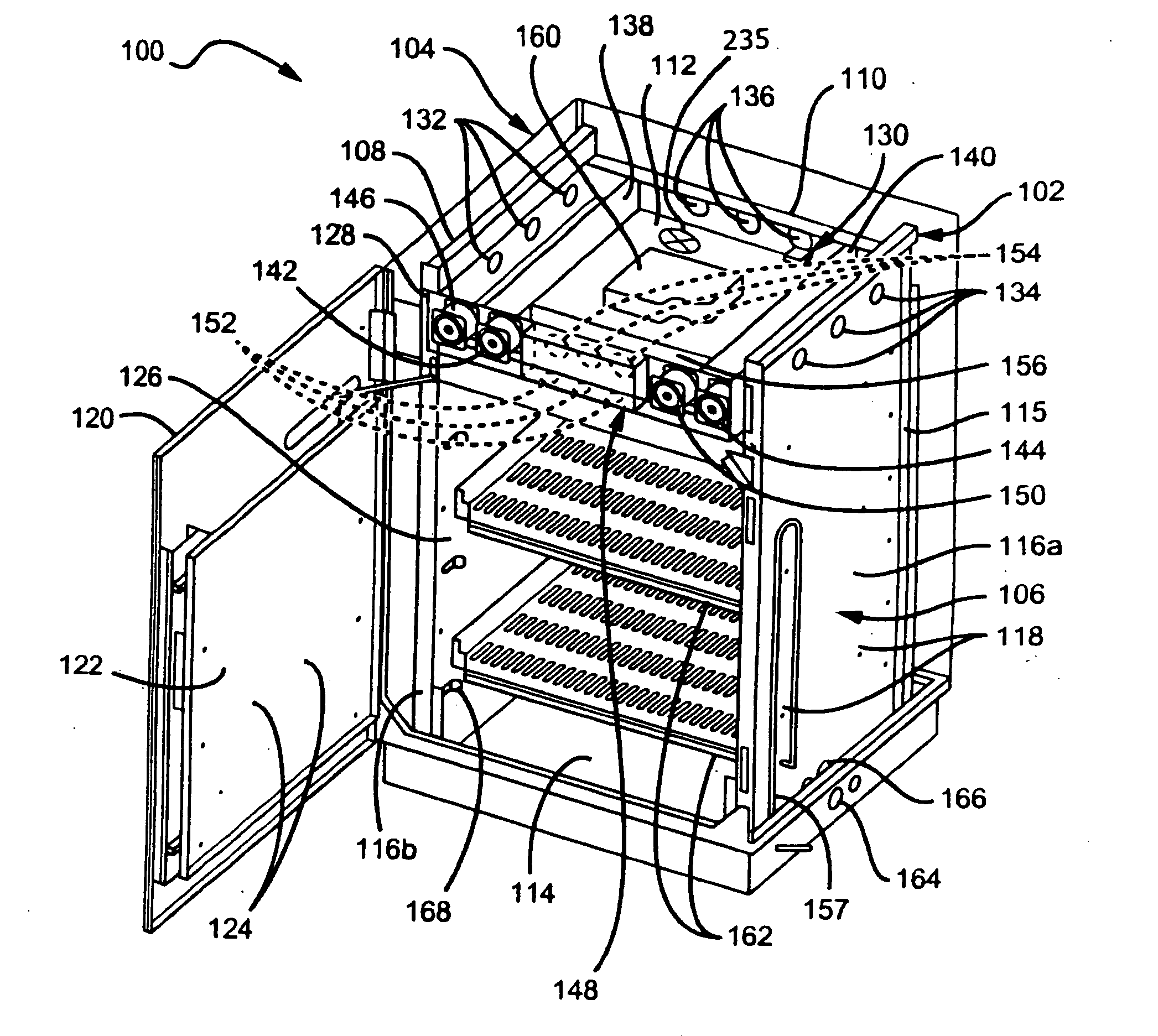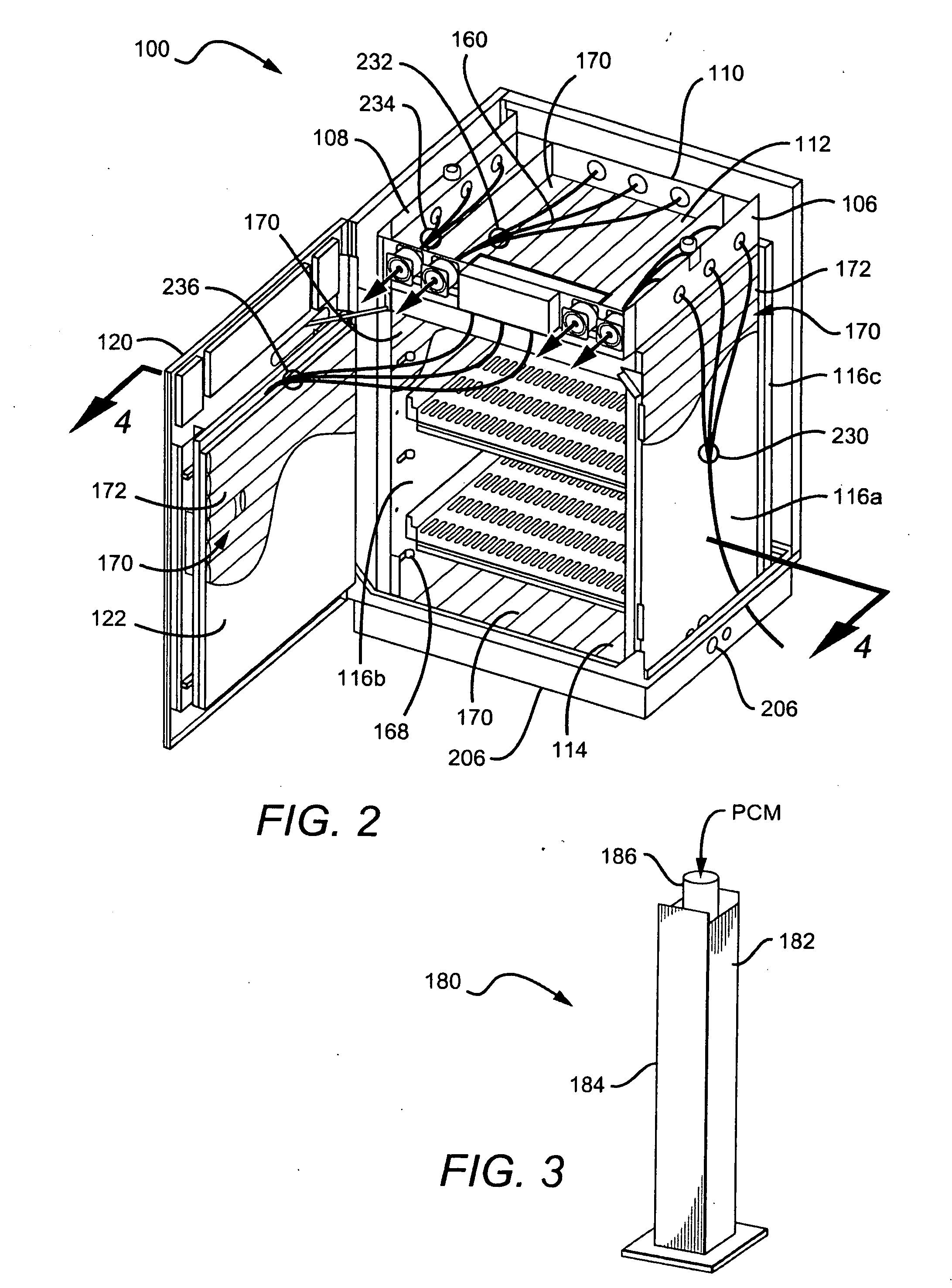Thermally insulated cabinet and method for inhibiting heat transfer
a technology of thermal insulation cabinets and cabinets, applied in cabinets, electrical apparatus casings/cabinets/drawers, cooling/ventilation/heating modifications, etc., can solve the problems of lead acid batteries that cannot meet the requirements of use, lead acid batteries can be damaged or shortened, and the life expectancy of lead acid batteries can be reduced by half, so as to reduce thermal energy
- Summary
- Abstract
- Description
- Claims
- Application Information
AI Technical Summary
Benefits of technology
Problems solved by technology
Method used
Image
Examples
Embodiment Construction
[0026]FIG. 1 shows one embodiment of an enclosure / cabinet 100 according to the present invention that comprises an inner cabinet 102 arranged within an outer cabinet 104 such that there is space between most surfaces of the inside cabinet 102 and the adjacent surface of the outside cabinet 104. The inner and outer cabinets 102, 104 can have different shapes and sizes according to the present invention and can provide different spacing between adjacent surfaces. The outer cabinet 104 is shown in FIG. 1 (and some of the following figures) without a top and right surface so that the inner cabinet 102 is visible. It is understood that the outer cabinet 104 contains these surfaces that are not shown and the missing surfaces are present in the finally assembled cabinet 100.
[0027] The inner cabinet 102 is generally defined by right, left, rear, top and bottom inner walls 106, 108, 110, 112, 114 made of a rigid material such as metal or plastic, with a suitable material being steel. The wa...
PUM
 Login to View More
Login to View More Abstract
Description
Claims
Application Information
 Login to View More
Login to View More - R&D
- Intellectual Property
- Life Sciences
- Materials
- Tech Scout
- Unparalleled Data Quality
- Higher Quality Content
- 60% Fewer Hallucinations
Browse by: Latest US Patents, China's latest patents, Technical Efficacy Thesaurus, Application Domain, Technology Topic, Popular Technical Reports.
© 2025 PatSnap. All rights reserved.Legal|Privacy policy|Modern Slavery Act Transparency Statement|Sitemap|About US| Contact US: help@patsnap.com



